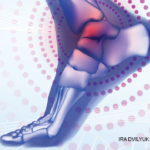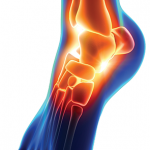Follow-up Visit with Time
A 62-year-old male patient returns to the office for a follow-up visit for chronic idiopathic gout without tophi. The patient’s present uric acid level is 4.0, and he is now taking allopurinol 450 mg per day. Previously, he was taken off indapamide due to an increase in his uric acid. He indicates there is no pain in his left ankle, but he has mild swelling. There is no tenderness to the left ankle or foot. He is taking colchicine only for acute flare attacks. The patient is now on a low-purine diet and is being treated for squamous cell cancer on his nose and right arm. He still takes gabapentin for facial neuropathy and will not receive his next round of chemotherapy until September. The patient points out that he is leaving for Florida in three weeks for a two-month stay.
Past Family History
Father also suffered gout, but is no longer living.
Past Social History
Patient does not smoke or use any tobacco products.
Review of Systems
Constitutional: Negative for chills, pallor, fatigue, fever, weight gain/loss.
Neurologic: Negative for weakness.
Respiratory: Negative for cough, dyspnea, chest pain (respiratory), wheezing.
Gastrointestinal: Negative for anorexia, nausea, emesis, hematemesis, diarrhea, constipation, melena, abdominal pain, dysphagia, reflux, indigestion/heartburn.
Musculoskeletal: Negative for rheumatologic manifestations, back pain, myalgias; positive for joint and bone symptoms—left ankle pain, c/o swelling, severity mild.
Physical Exam
General/constitutional: Vital signs: BP systolic 122, BP diastolic 80, weight 216.00 lbs., temp 97.2°F, pain score 3/10; well nourished, well developed.
Respiratory: Chest symmetric, lungs clear to auscultation, no cough.
Musculoskeletal: Left ankle is positive for one swollen joint, decreased ROM. Left foot has mild swelling, no pain, mildly reduced ROM. There are zero tender joints. No tenderness or warmth. Patient can bear full weight without pain.
Medical Decision Making
Radiologic procedures: Reviewed left foot X-ray—heel spur, soft tissue swelling from prior visit.
Laboratory studies: Reviewed urinalysis complete, uric acid, C-reactive protein, sedimentation rate by Mod Wet, CMP, CBC (includes DIFF/PLT) from the previous visit.
Assessment/Plan
The patient’s gouty arthropathy is improved, with present uric acid of 4.0. He is to continue taking allopurinol once a day and colchicine 0.6 once or twice a day if he has an acute flare. The patient is instructed to follow up in three weeks, prior to leaving for Florida. The importance of daily adequate hydration and maintaining a low-purine diet was emphasized with the patient. It was necessary to discuss details of different options for a diet and exercise plan. The physician will order new labs to continue monitoring his sedimentation rate and uric acid level, and also stressed the importance of the patient calling for an appointment if he has an acute flare so his joint can be aspirated for a crystal analysis. The total time for the visit was 30 minutes, but more than 50% of the visit was spent on counseling the patient on a proper diet and exercise plan.

